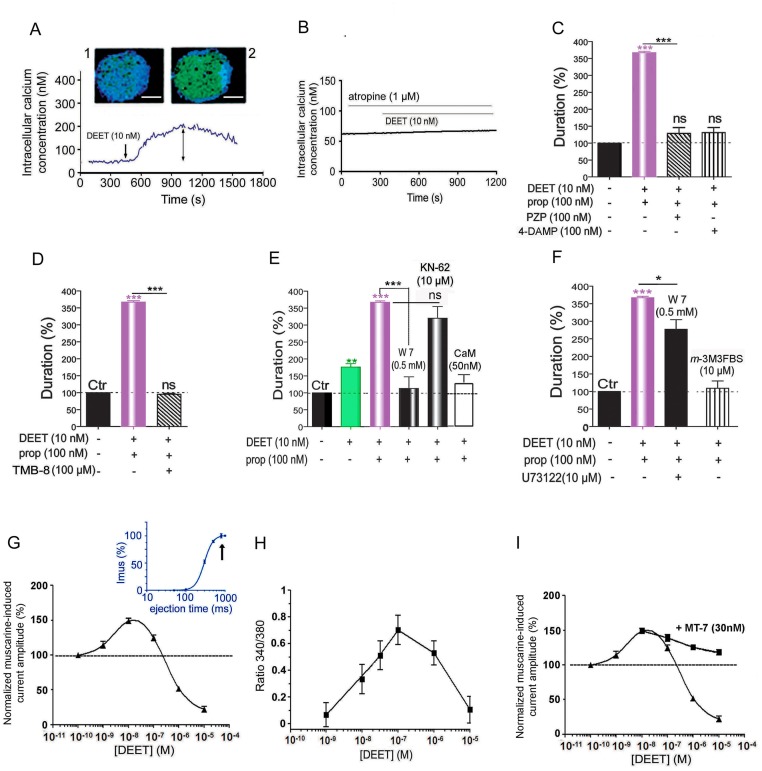Fig 2. Synergism between DEET and propoxur occurs through a positive allosteric-like modulation of insect M1/M3 muscarinic receptors and intracellular calcium-dependent signaling pathways.
A) Bath application of 10nM DEET increases intracellular free calcium concentration ([Ca2+]i) in Fura-2 loaded DUM neurons (inset 2). Note that, under control condition, calcium spark-like events are detected (inset 1). B) Pretreatment with 1μM atropine, a specific antagonist of muscarinic receptors (mAChRs), completely blocks the enhancement of [Ca2+]i produced by 10nM DEET, indicating the involvement of mAChRs. C) Bar graph summarizing the inhibitory effect of M1 and M3 mAChR antagonists pirenzepine (PZP) and 4-DAMP, respectively, on the synergism between DEET and propoxur. D) Bar graph illustrating that TMB-8 (100μM) also completely blocks the synergism between DEET and propoxur. E,F) Characterization of the intracellular calcium-dependent molecular events involved in the synergistic action of DEET on the propoxur-induced anticholinesterase effect. Intracellular application of 0.5mM W7, the calmodulin inhibitor and 50nM calmodulin (CaM) inhibit the positive potentiating effect of DEET on the toxic activity of propoxur. By contrast, KN-62 (10μM), which binds to CaM kinase II and blocks its activation by calmodulin, does not produce any effect (E). If pretreatment with 10μM of U73122, an inhibitor of PI-PLC known to regulate AChE activity, partially counteracts the effect of 0.5mM W7, application of the PI-PLC activator, m-3M3FBS (10μM) produces similar inhibition of the synergism between DEET and propoxur to that of observed with W7 tested alone (F). G) Modulation of the maximum amplitude of muscarine-elicited currents versus the concentration of DEET applied. The limited window of DEET concentration within which a maximum response potentiating effect is observed, is around 10nM (G). For higher DEET concentrations, the sensitizing effect is counteracted and eventually outweighed by an inhibitory action of DEET. Inset illustrates the semi-logarithmic dose-response curve for the muscarine-induced current applied by pressure ejection. Arrow indicates that the maximum current amplitude is obtained for pressure ejection duration of 500ms. H) DEET induces a transient concentration-dependent [Ca2+]i rise in Fura-2-loaded DUM neuron cell bodies. The changes in [Ca2+]i response amplitudes and the window of concentrations for DEET action were very similar with those illustrated in 2G. (I) Bath application of MT-7 (30nM), which is known to bind on M1 mAChR allosteric site, partially reversed the inhibitory effect observed for high concentration of DEET. Number of experiments varies from 8 to 13 cells. Data are means ± S.E.M. *, ** and ***, values significantly different, p < 0.05, p < 0.01 and p < 0.001, respectively. ns, not significant (p > 0.05). Scale bar: 20μm.

